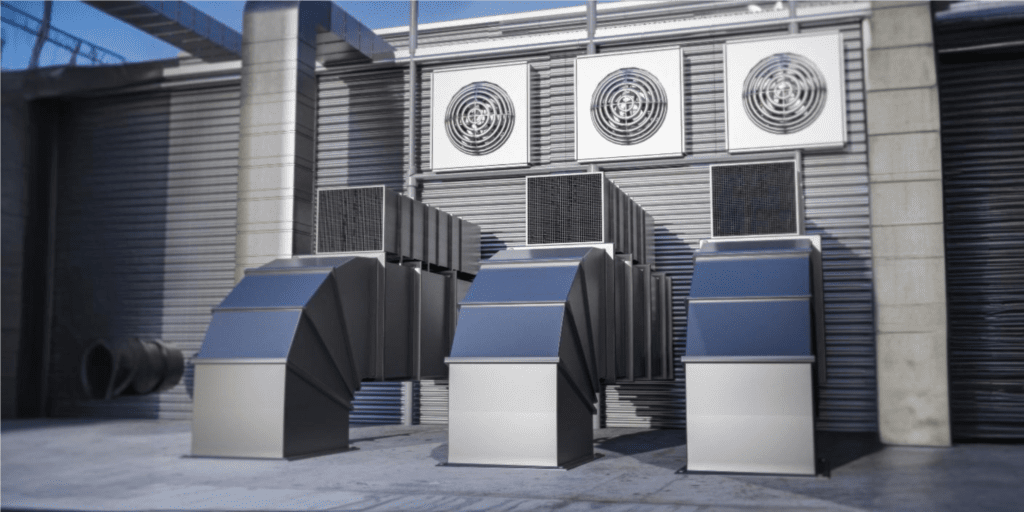
Having an air conditioner is a necessity to be comfortable during summer. With time, dust, pollution, and dirt can gather in the various parts of the air conditioner, which can affect its efficiency, sometimes requiring expensive repairs. Regular maintenance improves the air conditioning system’s longevity, enhances air quality, and reduces energy bills. This article will serve as a comprehensive guide for cleaning your air conditioner units to give them optimum performance.
Importance of Air Conditioner Cleaning
Before we set to the task, let’s take a moment to consider why cleaning is important:
Increase Efficiency: Technical performance suffers from dirt accumulation and works harder.
Lower Energy Bills: Works well; hence, consumes less energy, which means lower electricity bills.
Better Indoor Air Quality: Polluted air builds up inside the unit and is blown out into your living space, causing air-quality issues. Cleaning can help you breathe out of all this.
Extends lifespan: A clean, well-maintained air conditioning unit will live longer with fewer unexpected problems.
After you understand the significance, let’s proceed to how to clean the AC the right way.
Step1: Make the Power Supply Off
Safety first, The air conditioner should be turned off before cleaning starts. This assures you are safe throughout the process and will not face an electric shock. To turn off the electricity to your air conditioning system, turn off the electrical switch that controls it.
Step 2: Empty Or Clean the Air Filter
One of the most important parts of air conditioning is the air filter. If that mesh were intended to catch all impurities, dust, and dirt, they would surely not be able to get into the house’s circulation. A clogged filter clogged filter slows airflow and demands more power from the system.
Cleaning Air Filter: Remove disposable filters from the air conditioner and wash them in warm, soapy water. Dry them thoroughly before putting them back.
Replacement of Filter: The filter is replaced just like the previous one if it gets damaged beyond repair. Change of filter or cleaning should be done every one to three months depending on use and air quality in the house.”
Step 3: Cleaning Evaporator Circuit
The evaporator coils accumulate dirt and dust gradually, which affects the cooling capacity of your air conditioner. Cleaning the coils will improve the system’s heat absorption.
Remove the panel and follow the instructions in your unit manual for accessing coil cleaning.
With a soft brush, gently brush to remove dirt on the surface.
For a more thorough cleaning, a professional coil cleaner that is safe for the system would be used. Foaming and dirt removal, as per the cleaner’s directions, should be allowed.
Wash them with water if necessary and dry completely before compiling the panel.
Step 4: Clear The Fins And Coils Of The Condenser
Because they are out in the weather, the coils in the outside unit can get just as dirty as an air conditioner. It could get hot with dirt, leaves, and grasses that decrease the heat transfer.
Clear out any material around the coil and fin to clean them.
Loose debris and dust can be removed with a soft brush or a vacuum with a brush attachment.
An external spray will clean them of anything sticking to the coils but don’t use excess pressure as this could harm the fins.
If necessary, broken fins can be straightened using fin combs, which increase cooling efficiency and airflow.
Step 5: Keep That Drain Clear
Any excess water created by the A/C unit drains out through this drain line. A blocked drain could cause humid tendencies and leakages in your house.
A drain line is a small plastic tube that runs near the indoor unit. This is how you clean it.
Use the wet/dry cleaner to suck out any obstructions or buildup. Distilled vinegar poured down the pipe would also help kill bacteria or mold growth.
Run water through the drain line to ensure it is clear.
Step 6: Checking Refrigerant Levels
Cleaning alone will not keep your air conditioner going; proper refrigerant levels must also be maintained. A system with low refrigerant will overwork itself to compensate for it, leading to overheating and possible failure.
How to Check: You inspect the refrigerant lines for possible leaks. Nevertheless, it is advisable to have a qualified technician check the refrigerant levels and recharge the system. If your air conditioner is not cooling properly or frost has developed on the lines, have a technician inspect it properly.
Step 7: Ensure the Fan is Clean
The blower fan is responsible for circulating air within your system, so dirt accumulation on blades will compromise their efficiency and airflow.
To clean the fan: Turn off the fan and open the access door of the fan section.
Use a toothbrush or vacuum to remove dust buildup on the fan blades.
Care for the area around the fan housing, which might obstruct airflow should there be dirt.
Step 8: Test Run Your System
After cleaning everything necessary, it is time to check the air conditioner. Turn the electricity back on, set it to the desired temperature, and watch the machine for a few hours to see if it works properly.
Relevant Contexts for Professional Contacts
While cleaning an appliance manually is a good preventive maintenance measure, there are certain things you need to leave in the hands of experts. These difficulties include Airflow malfunctions that remain after establishment.
- Your unit produces strange sounds.
- Low levels of refrigerant or even gas leakage.
- Your home is not cooling off as it used to.
In summary
Regular cleaning improves the working efficiency of your air conditioner, prolongs its life, and purifies the quality of air inside your house. You can turn the machine on with complete ease, year-round, following the measures since Greenworks AC is always at your service to solve all the air conditioning repair and maintenance events.
